|
Here's a wintery view of the Hurlers under a bright Moon, looking North towards the bright stars of the Plough. The purple glow on the horizon is an unusually bright aurora, bright enough to be seen under Moonlight. Near the village of Minions, the Hurlers are a unique triple stone circle dating to the late Neolithic or early Bronze Age. The layout of the site could plausibly have been inspired by Orion's belt, one of the most obvious groupings of stars in the night sky, but this is speculative. We know very little about the people who built these monuments, what they believed and how they lived their lives as they left no written records. But we can be sure they experienced the night sky in an immediate visceral manner, without modern light pollution and distractions. Certainly, various pre-historic sites on Bodmin Moor have been shown to be astronomically aligned. For example, when viewed from the Craddock Moor circle on the Summer solstice, the Sun sets directly above the highest hill on the moor, Brown Willy.
Looking at these ritual sites we get some sense of how ancient people attempted to make sense and impose order in their world.
0 Comments
Sometimes "CSI enhance" really works, just not with blurry CCTV footage of hardened criminals. The biggest obstacle to taking clear images of the Moon and planets is Earth's turbulent atmosphere, which causes a heat -haze like effect. Astronomers use a technique called lucky imaging to overcome this. A video is taken of the target and stacking software used to identify and combine the sharpest frames. This makes it possible to recover detail impossible to see in the source video or at the eyepiece.
The image above was taken with a 12" dobsonian telescope with a 2x barlow lens, giving an effective focal length of 3,000mm. For comparison, a very large telephoto lens might have a focal length of 600mm, one fifth the magnification. AutoStakkert 3.1.4 was used to analyse and stack the source video. As well as the atmospheric turbulence it was able to cope with some uneven motion from the telescope as it tracked the target crater imperfectly. So why doesn't technique this work with CCTV footage? If the subject stays quite still it is possible to recover a bit more detail by combining frames, but this won't work if they are moving. Also, the quality of any image is constrained by the size and quality of the optics, and the image sensor. A small lens and cheap sensor produces images with limited resolution even under the best conditions. Copernicus crater, on the near side of the Moon, is 93km across and 3.8km deep - not quite big enough to fit the county of Cornwall inside it. It's a relatively young crater, thought to have excavated by an impact some 800 million years ago. It's surrounded by a visible system of rays pointing outwards, lighter materiel that was ejected and that still lies on the Moon's surface. The best place to photograph it is from Lunar orbit rather than the surface of the Earth, 360,000km away, but that's not an option for most astronomers. These two spectacular images were taken during the Apollo 12 mission. The Andromeda galaxy (also known as M31) is the nearest large neighbour to the Milky Way, composed of an almost unimaginable 1 trillion stars. To count them all at a rate of one a second would take almost 32,000 years. It's the most distant object we can easily see with the naked eye. At 2.5 million light years away the light we see now set out when our ancestors looked something like this. It's said that the Andromeda galaxy is as big as 6 full Moons in the sky but is this the whole story? To the naked eye it never appears this large. Its central core is much brighter than the spiral arms due to the higher concentration of stars. It's only this region that's visible. The darker your skies the easier it is to pick out from the background, and the larger it appears, but it's no bigger than the Moon. Binoculars or a telescope gather more light and produce a brighter image, allowing more of the galaxy to be seen. With a medium-sized telescope (perhaps a reflector with a 6" mirror) in good conditions it becomes possible to make out the spiral structure. Long-exposure photographs reveal more of the galaxy's faint outer regions, as the camera can be used to collect light over minutes or hours. In a long-exposure image the Andromeda galaxy does indeed have the same apparent size as 6 full Moons. The image below was taken using a small telescope and cooled camera. The 2 hour 30 minute exposure time reveals the faint glow from the sparse population of stars in its outer reaches. A bridge of stars connects M31 with its satellite galaxy, M110. The immense gravitational pull is distorting its smaller companion. An even longer exposure, such as this exceptionally deep image by Olly Penrice, shows the outer regions more clearly. However, galaxies don't have sharply defined limits. The 300 ton Keck telescopes in Hawaii have found a sparse population of stars, extending the diameter of the disc from 120,000 light years to 220,000 light years. From our perspective, the full extent of the disc is 5 degrees, 10 times the apparent width of the full Moon. Beyond the disc is an even fainter halo of stars, and beyond that a huge envelope of tenuous gas spanning two million light years. The gas slowly accumulates onto the disc, contributing to the formation of future generations of stars. Whatever Andromeda's actual size, it's getting bigger. It's heading this way and will collide and merge with our own galaxy in a few billion years. But several nebulae in our own galaxy have an even larger apparent size than the Andromeda galaxy, such as the Angelfish nebula on the shoulders of Orion.
If you're prepared to forego some sleep, May can be a good time to view the Milky Way from the UK.
The 40-minute timelapse shows the galactic centre, in the constellation Sagittarius, rising to the South. It's the brightest region of the Milky Way due to the concentration of stars. The glow on the left is from the city of Plymouth 15 miles away.
The panoramic image was stitched together from about a dozen overlapping frames, from North on the left to South on the right. The centre of our galaxy is to the right while to the left we're looking towards its outer regions.
The naked eye view is both more and less impressive than the panorama. The image shows more detail and colour but can't convey the immense scale of our galaxy reaching across the sky. Observation and astrophotography complement each other.
The Milky Way is a spiral galaxy, a disc-like structure with a central bulge of stars. Our solar system resides in the Orion-Cygnus arm.
Notice how the constellations match up with those visible in the panorama. From our vantage point we have a limited view of the Milky Way as its dust lanes block our view, thanks to instruments like the Hubble space telescope we have a better idea of the shape of many distant galaxies than our own. The image above is an artist's representation but it's based on real data. The major features have been mapped out from radio signals and infra-red light, which can travel through the dust.
The dust lanes can be seen in the panorama, the most prominent one the Great Rift which runs from Cygnus to Sagittarius. Visually, it splits the Milky Way in two. There are just as many stars in this region but they are hidden from view.
We can view different sectors of the galaxy over the course of the year as the Earth orbits the Sun. From the UK the southern constellations between Norma and Puppis never rise above the horizon but the others - Canis Major to Scorpius - can be seen. The galactic centre is best seen in May, August and September (in June and July the nights are short and the sky never gets fully dark as the upper layers of the atmosphere are it up by the Sun). Canis Major, Monoceros and Orion are best viewed in the Winter.
Visible light never tells the whole story. The human eye is only sensitive to a small window in the electromagnetic spectrum. We can't perceive light that has a shorter wavelength than violet or a longer wavelength than red.  Credit: Wikimedia user D-Kuru Credit: Wikimedia user D-Kuru Infra-red light was discovered by an astronomer, William Herschel, better known for discovering the planet Uranus with his home-built telescope. He simply used a prism, a sunbeam and a thermometer. The prism splits the Sun's white light into its component colours as red light is refracted (or bent) less then blue light. When a thermometer is placed in the coloured beam its temperature rises, as the dispersed sunlight heats it. But Herschel was shocked to find that when he placed the thermometer just to the right of the red light the temperature went up even more. He concluded that the Sun was emitting a form of invisible light which we now call infra-red, literally "below red". This turned out to be a far more important discovery than finding a new planet. (It was also something of an accident, William moved the thermometer out of the beam to measure the ambient air temperature, but he deserves full credit for noticing and solving the puzzle.) Infra-red detection is somewhat misleadingly referred to as 'heat vision'. In fact, all objects emit light, it's just that objects at everyday temperatures radiate mostly infra-red. It's odd to think that we glow in infra-red light. Hotter objects shine in visible light, you can see this by turning on an electric hob. As it warms up it starts to glow a dull red, as peak emission moves up the electromagnetic spectrum from infra-red towards red. Our Sun, with a surface temperature of almost 6,000°C, shines most brightly in green light but we perceive it as white because blue and red light is also produced. Objects don't emit a single wavelength (or colour) of light but a range, the Sun also produces infra-red and ultra-violet light. There is a relationship between temperature and energy, higher frequency light-waves carry more energy so require higher temperatures to produce. Very hot objects emit x-rays, while cold ones produce microwaves or radio waves. This phenomenon is somewhat confusingly called 'black-body radiation', it matters to us because it's how the Sun warms our planet. It's also useful to blacksmiths, who use the colour of the heated metal to judge its temperature. Above are two images of NGC 1499, the California Nebula. The monochrome image on the left shows glowing hydrogen (actually a deep red colour, but the mono image shows more detail) and was taken at Caradon Observatory. The image on the right is a bi-colour composite of visible and infra-red light. Glowing hydrogen is shown as orange while 'warm' interstellar dust is blue. ('Warm', that is, compared to the near-void of space. The dust is at a temperature of somewhere between -170°C and -200°C.) Regions that emit both Hα and IR light are white.
The infra-red data reveals a much larger structure than can be seen in visible light. The blue patch on the left of the nebula appears be heated by stellar winds from the star Xi Persei, which is responsible for lighting up the nebula. The glowing hydrogen is a relatively thin skin on a large cloud of gas and dust. Concentrations of gas and dust block the UV light from XI Persei, providing shade. The IR data has been raided from one of NASA's space telescopes, the Wide-field infrared Survey Explorer (WISE). WISE images are freely available for download but must be credited. It's surprising just how far some deep sky objects stretch across the sky. This composite shows a deeper exposure aligned over a wide-angle image of the Caradon Observatory site. The outer Milky Way runs from upper left to lower right, from Gemini to Cassiopeia. Visible above the trees is the red smear of NGC 1499, the California Nebula, to scale with the foreground image. It covers some 3 degrees of the sky, six full Moons across. While invisible to the naked eye it's not that far out of sight, making a challenging binocular target. However, in long-exposure photographs it's one of the brightest nebulae in the sky. A closer view shows its structure, glowing red from ionised hydrogen with hints of blue from glowing oxygen giving it a pink hue. Dark features are concentrations of dust, often sites of star formation. It's a vista sculpted by natural processes - stellar winds and radiation pressure from bright stars, and gravity.
Xi Persei is a runaway star, ejected from its birthplace either by a close encounter with another star or the supernova of a companion. A chance encounter has brought it close to a molecular cloud, making the California Nebula visible. The plane of the Milky Way is littered with these concentrations of gas and dust, largely invisible in the visible spectrum but detectable by radio and infra-red telescopes. The nebula is just an optically bright feature of a much larger complex. If Xi Persei had been launched in another direction it might well have painted, and to a degree sculpted, an entirely different deep sky object. The monochrome image above was taken using a short telephoto lens on the 26th March and blended into a colour image taken previously. Imaging it with a telescope usually requires shooting separate panes to stitch together in a mosaic, as it will not fit within the field of view. This spectacular 103 hour effort by Sara Wager shows the nebula in intricate detail and is best viewed on a large high-resolution monitor.
Here's a view of the Kit Hill chimney stack taken from almost 6 miles away, taken with a cheap telescope and an old webcam. On the whole it's a fair representation of what can be seen through the eyepiece. Colours are a little washed out because Kit Hill was in shadow but it's just possible to make out people walking around the stack. However, the static image doesn't show the 'heat haze' effect caused by moving currents of air, the eyepiece view isn't as sharp. Jupiter has been pasted in at the same image scale as the close up. Jupiter's apparent size varies depending on where it and Earth are in their orbits around the Sun. Even at its closest approach (628 million kilometres) Jupiter's angular size is only 50 arc-seconds or 0.014 degrees. Photographing Jupiter is like taking a picture of a 5 pence piece from 320 feet away. (But while high magnification is required to see the planets, some nebulae cover surprisingly large patches of sky.)  The full-size image of Jupiter shows more detail. The major cloud bands are visible and the great red spot, a giant storm at least 300 years old, is at lower right. The dark mark is the shadow of one of Jupiter's moons. This image was taken using a different telescope, a 5" refractor, and a 4x magnifying Barlow lens. This combination gives about 3.6 times the magnification of the telescope in the top image, when used with the same camera. To image the planets and Moon amateurs use a technique called 'lucky imaging', to overcome distortion caused by atmospheric turbulence. A short video is taken of the target and the clearest frames are selected and combined using free stacking software, such as Registax. For an example of amateur planetary imaging at its best I'd recommend taking a look at Damien Peach's website. Professional planetary imagers such as NASA either use the Hubble Space Telescope or simply park a spacecraft in orbit around their target, options beyond the budget of most amateurs. The Juno probe is currently at Jupiter and returning spectacular images. Going back to the telescope in the first image, a Celestron Astromaster 114, is not one I'd recommend. The telescope itself is useful but it's let down by the mount and finder, making it a frustrating business to find objects in the sky. Small Dobsonian telescopes are often recommend for people starting out in astronomy due to their low cost, ease of use and light grasp. They are a type of Newtonian telescope which use a mirror to gather and focus light. Compared to a pair of binoculars they are more stable and produce a brighter image. There are even cardboard self-assembly versions available.
40,000 years ago a star exploded. This is the result. This is the supernova remnant Simeis 147, sometimes known as the Spaghetti Nebula. It spans about 3 degrees of sky on the Auriga/Taurus border, a diameter of six full Moons. The bright star Elnath is at the bottom of the frame, which is easily visible to the naked eye. These star charts, generated using World Wide Telescope, show the location of Simeis 147 in the sky. Orion is sinking out of sight from the UK at this time of year but Auriga is still visible to the west as it gets dark, just above Venus. The star chart above was generated using the free software Stellarium. The bright red filaments of Simeis 147 are largely composed of glowing hydrogen, heated as material expelled by the explosion crashes into its surroundings. Over the next few thousand years it will continue to expand and dim, eventually fading into the background. This inverted monochrome image, taken through a hydrogen-alpha filter, shows the structure of the nebula more clearly.  (No telescope was used to take these images, just a short telephoto lens, in order to fit it all in the field of view. The lens and camera ride on a lightweight motorised star tracker powered by AA batteries. Total exposure time was about 35 minutes for the colour starfield and 50 minutes for the hydrogen-alpha. The hydrogen alpha data was then blended into the red channel of the colour image to produce the final version.) (Amateurs have taken far better images of Simeis 147 than the one above. This is the best I could find, a spectacular 47 hour telescope mosaic by Franco Sgueglia & Francesco Sferlazza. The blue filaments are composed of glowing ionised oxygen.) 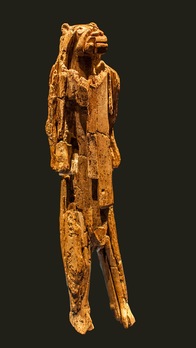 The Löwenmensch Lion, 40,000 BCE (Dagmar Hollmann / Wikimedia Commons) The Löwenmensch Lion, 40,000 BCE (Dagmar Hollmann / Wikimedia Commons) 40,000 years ago, when light from the supernova first reached Earth, our ancestors would have certainly noticed. For a few months it would have been the brightest thing in the sky, after the Sun and Moon and perhaps Venus. In the dark skies of the neolithic, darker than all but the most remote locations today, it's sudden appearance would have been dramatic and spectacular. Unfortunately we'll never know what they made of it as writing would not be developed for another 30,000 years. But we do have accounts of more recent supernova events. Kepler’s Nova of 1604 was clearly visible to the naked eye, and in 1987 a star exploded in the Large Magellanic Cloud, a nearby satellite galaxy of the Milky Way. The Hubble Space Telescope tracked its evolution over several years. It’s difficult to convey just how violent and extreme an event a supernova is. Perhaps the easiest way is to talk about about Death Stars. Alderaan appears to be a similar size to the Earth. Certainly it was inhabited by suspiciously human-like inhabitants, who appear to be comfortable in Earth gravity. To completely destroy a planet it’s necessary to overcome the force of gravity holding it together. Earth’s gravitational binding energy can be calculated, it comes to 2.49 x 1032 Joules in scientific notation, or 249,000,000,000,000,000,000,000,000,000,000 Joules in longhand. That’s a lot of energy, as much as our Sun puts out in a week. (A single Joule is enough energy to lift a tomato a metre.) The energy output of a typical type II supernova, caused by the collapse of a massive star, is 1.00 x 1046 Joules. The same as 40 trillion Death Stars firing at once. 40 trillion is a big number, if you counted one Death Star a second it would take you over a million years to tally them all. As the man said... ‘Bang’ doesn’t really do it justice. Fortunately there are no supernova candidates close enough to Earth to cause us any harm. But they can reach out and touch our atmosphere from enormous distances, evidence of past supernovae have been found in Antarctic ice cores, in the form of nitrate deposits. Important safety tips from Lord Vader there. Although to be honest, given his obvious breathing difficulties he’s probably more worried about stormtroopers coughing on him than our well-being.
Kit lenses, commonly bundled with DSLR cameras, offer a natural entry point into astrophotography due to availability and their wide field of view, allowing reasonable exposure times from a fixed tripod. The major difficulties for first time users are finding the correct camera settings and focusing on infinity. This guide offers a few tips based on my own experiences and blunders. This was one of my first attempts at shooting the Milky Way, taken on holiday in Menorca. I didn’t have a tripod with me so I simply laid the camera down on the patio, pointing straight up. It’s a 30 second exposure at 18mm focal length, giving the widest field of view. To capture as much light as possible the camera iris was opened fully, giving a focal ratio of f3.5.
Camera and Lens Settings It’s worth experimenting with these settings before heading out, to help avoid the frustration of fighting the camera in the dark. Aperture When shooting from a fixed tripod it’s important to gather as much light as possible. Typically this means shooting with the lens wide open by selecting the lowest aperture setting available. ... |
Archives
May 2020
Categories
All
|














































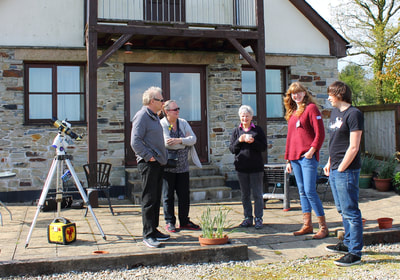
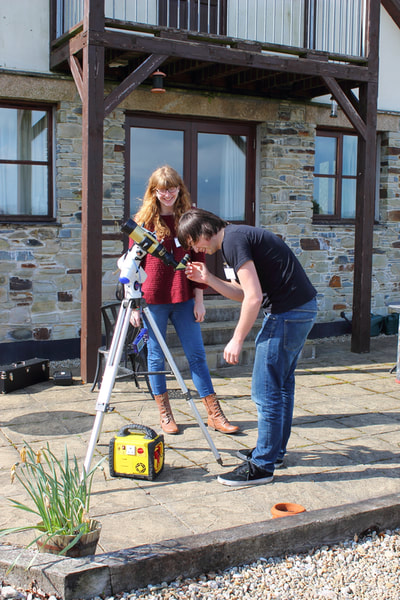


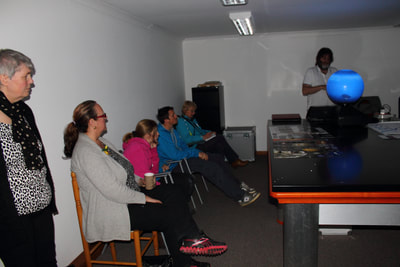























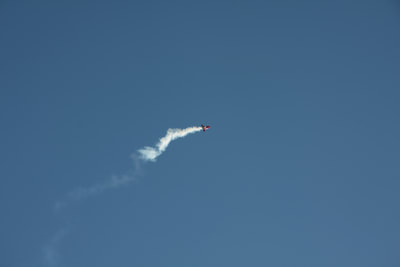





 RSS Feed
RSS Feed